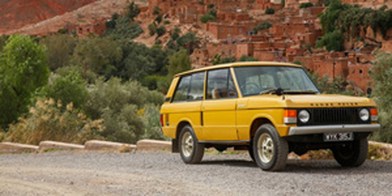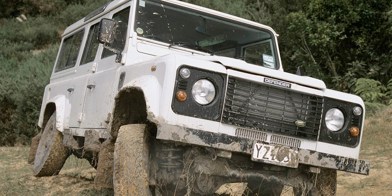It’s almost like Audi wanted to underline the existence of a wide spectrum. Suave simple gunmetal worn on the RSQ3 tester like a corporate suit, and retina-searing Kyalami Green and black wheels paired with the RSQ3 Sportback — making it look like a running shoe, or a budgie on crack.
But, I can confirm that draping either of these SUVs in a subtle colour does not suddenly make for subtlety. They’re both silly, unhinged, lunatics.
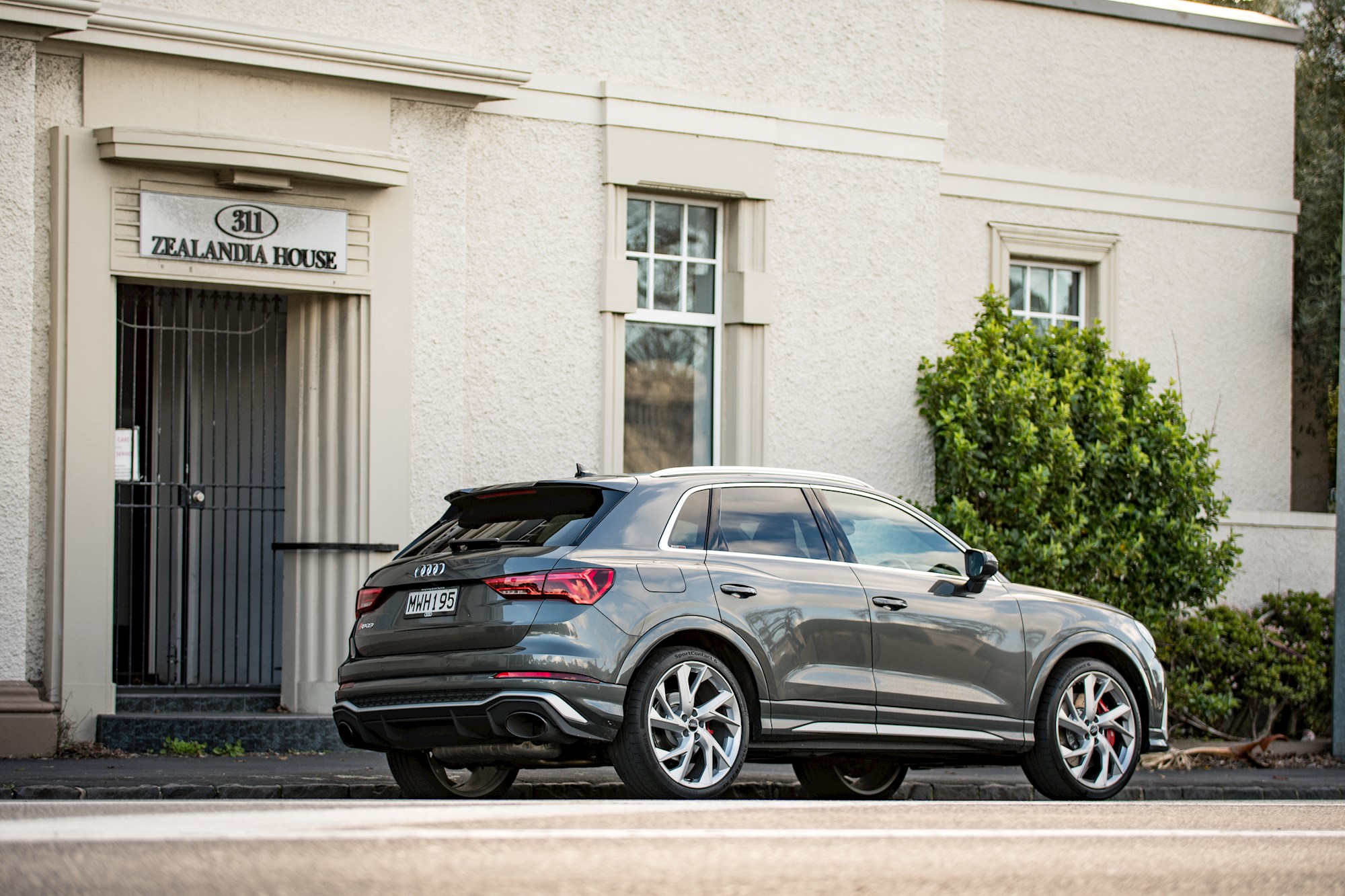
The spicy Audi duo lands in New Zealand ready to fight in an increasingly competitive performance SUV space race. The Mercedes-AMG GLC 43 and BMW X3 and X4 M40i are its main competition. And, on paper, the four-ring pairing is more than competitive.
Read More: Bonkers RSQ8-R is the world's fastest SUV
For one, they’re cheaper. Pricing starts at $111,900 for the standard SUV with the Sportback a $3000 premium. This makes them both significantly cheaper at base than the $132,300 GLC 43 and $132,300 M40i. The Audis are more powerful, too — its 294kW trumping the AMG’s 287kW and BMW’s 285kW.
On the flipside that engine makes less torque; 480Nm versus 520Nm and 500Nm, respectively. Even so, it’ll still hit 100km/h a few tenths quicker than the other two — 4.5 seconds placing it in hallowed territory (top speed is limited to 250km/h) . Although, those who know what lurks under the bonnet of these two SUVs know that impressive numbers are really only part of the equation.
Audi’s 2.5-litre TFSI turbocharged five-cylinder engine will go down in history as an icon of its time; an example of the motoring world taking for granted what it had. It’s not particularly advanced, but it is dripping with character and an off-beat scream capable of summoning all sorts of nostalgic Group B Quattro memories at the drop of a foot.
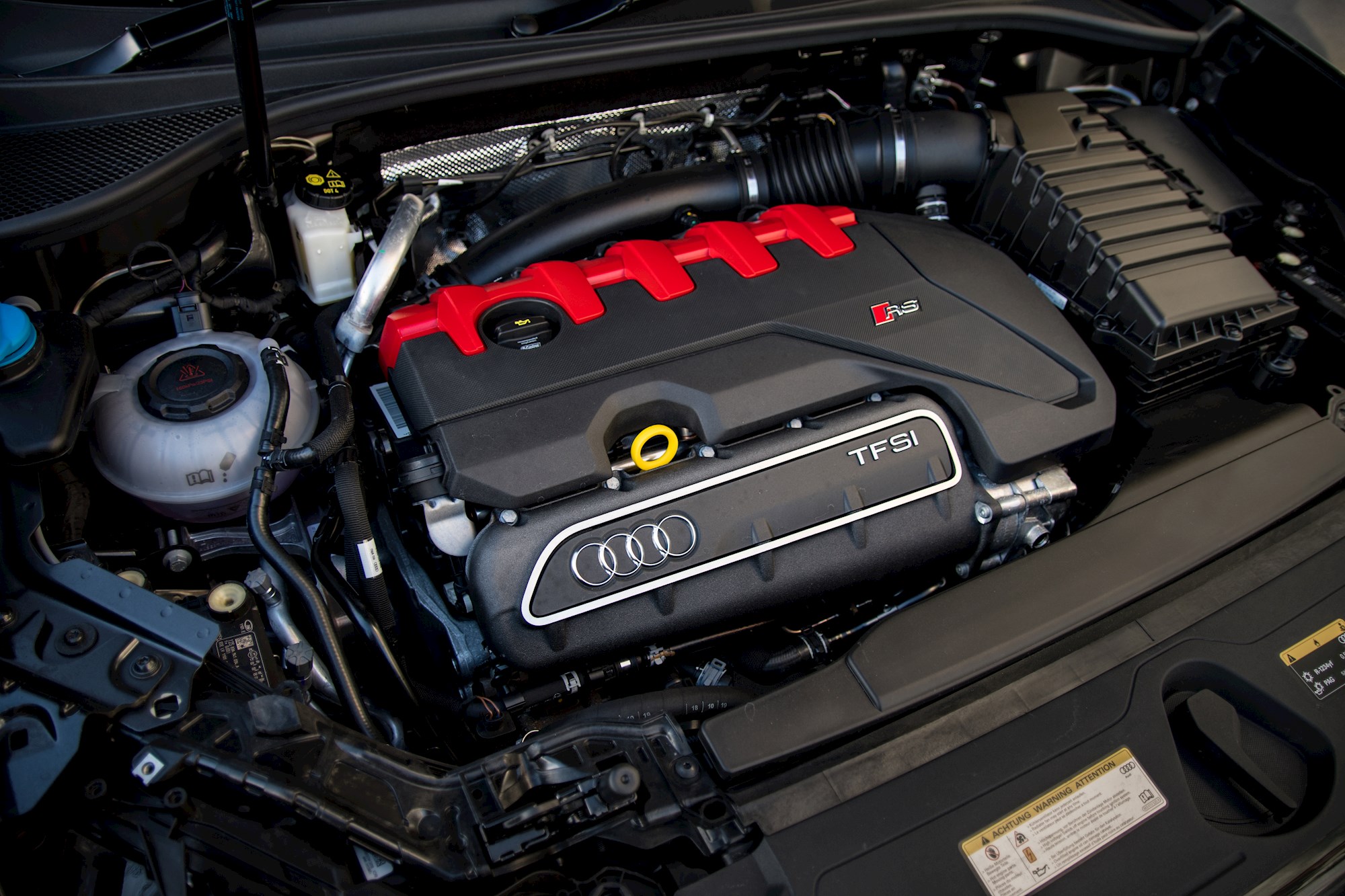
You can tell it’s not as sophisticated as some hot European four-poppers in the slight hesitation it has from a stand-still. Some of this is because of the lack of a secondary turbo, some is simply symptomatic of the seven-speed automatic. But, once it winds up the pitch, Audi’s thrumming five is visceral and addictive in a way few other engines can match.
I shouldn’t be so hard on the automatic, either. By and large, it’s an excellent partner in crime to that wonderful engine. And it needs to be. Peak power comes between 5850rpm and 7000rpm, meaning the paddles get quite the workout when you’re having fun. At no point did I find myself wishing for an extra two or three ratios.
Given how sharp each RSQ3 corners and how minimal the body roll is, ride quality is surprisingly liveable. You never forget that you’re driving “the sporty one”, but it’s far more supple than the BMW X4 M Competition I sampled at the beginning of the year.
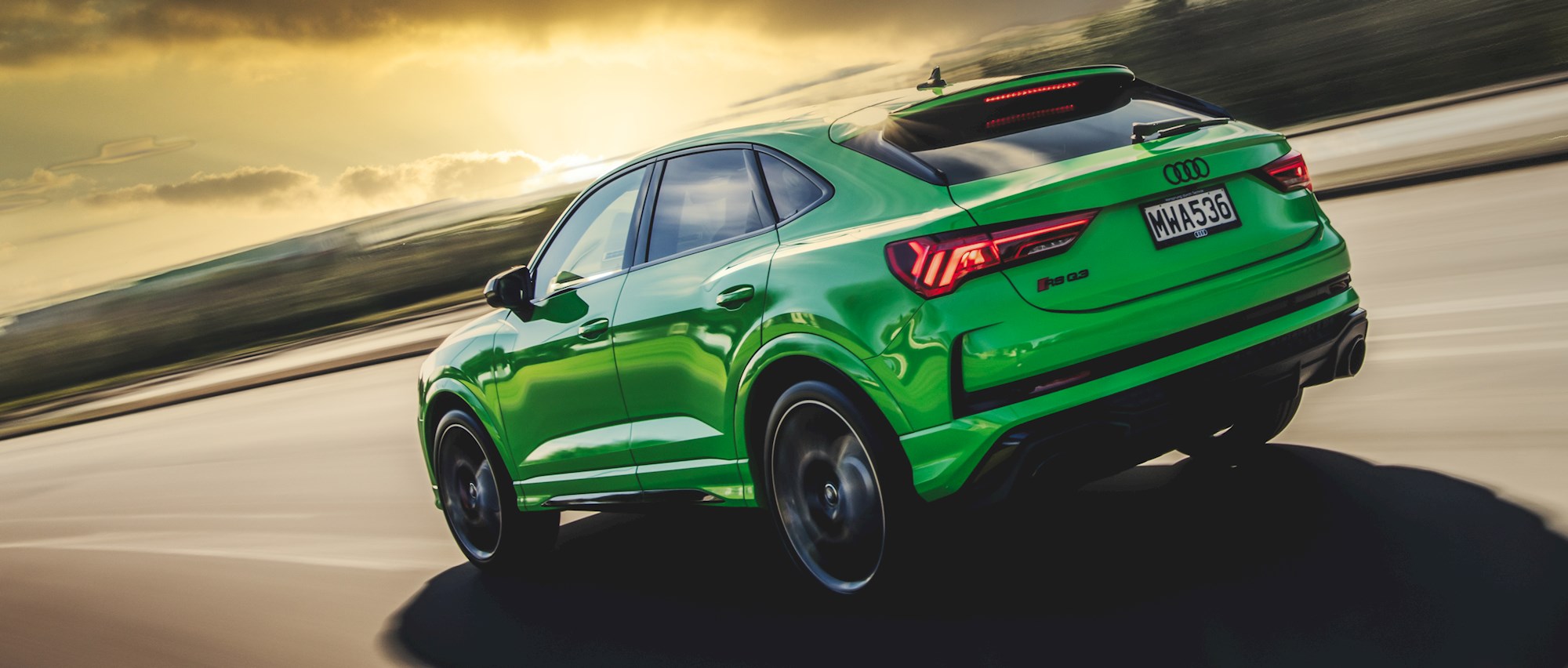
The X4 and X3 handle a little more fluidly, aided by more textured steering and a more balanced platform. But, the Audi isn’t far behind at all. And… that engine. Need I say more?
Maybe more to the point of why the Audis are so much cheaper than those aforementioned Mercedes-Benz and BMW rivals is that they’re significantly smaller. The overall 4506mm length and 2680mm wheelbase is almost enough to place it into a different size class entirely.
But it’s not like you notice any dimensional deficiencies in person. Both models still pack ample second-row room for adults, and hearty levels of boot space. Most interesting is the way the Sportback defies expectation. Given its sloping roofline, you’d expect clear deficiencies when it comes to the practicality stuff.
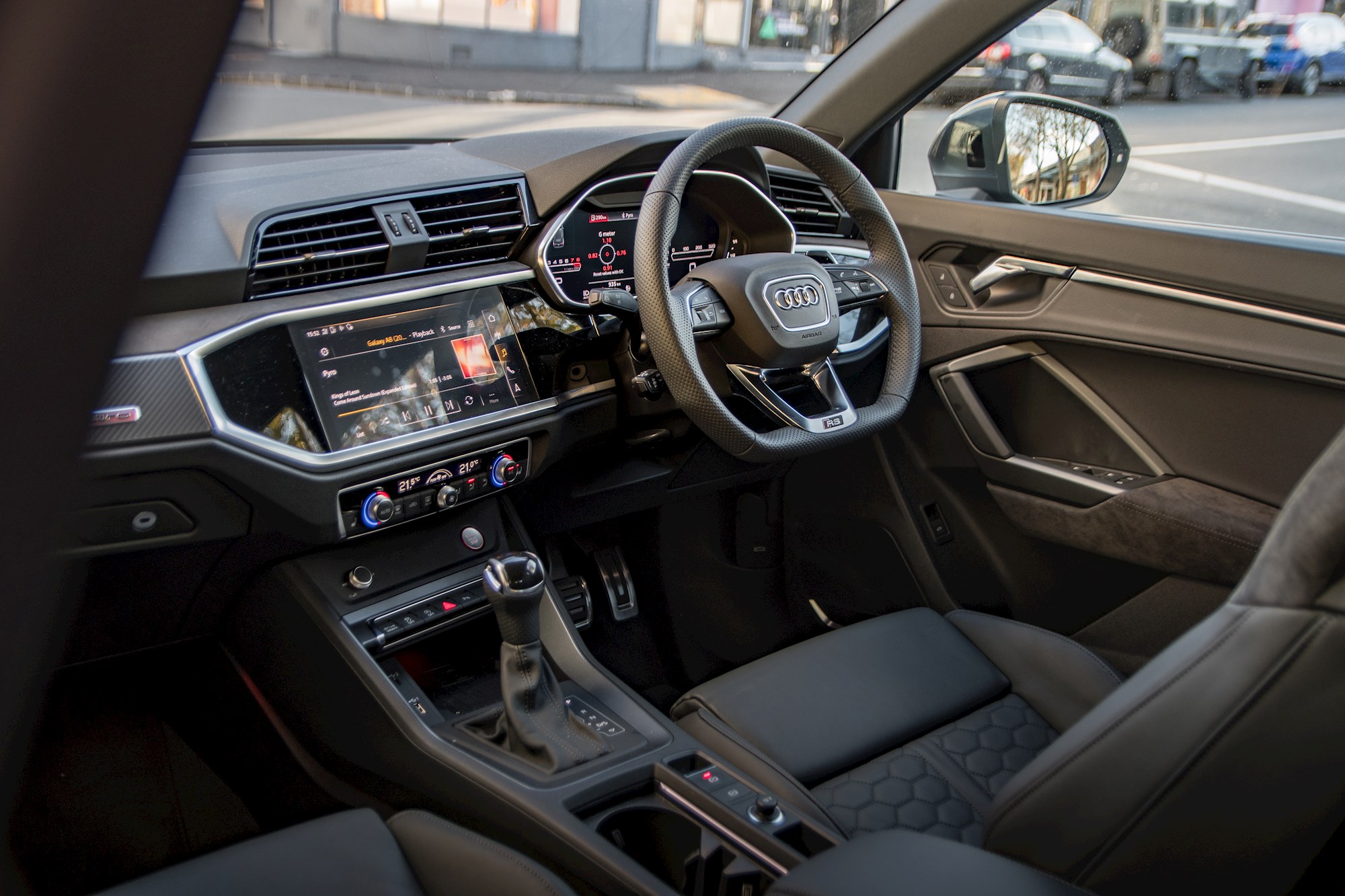
Yet, apart from forcing rear passengers to contort a little more to fit into the smaller aperture, the drawbacks are minimal. Once you’re in, the headroom is commendable thanks to the scooped-out ceiling. Bootspace is fine too — both models boast an identical 530 litres of volume with the seats up and 1525 litres with them down.
What’s surprising about both Audis is how generous they are with standard equipment. There’s still plenty of potential options to tick of course, like the three-zone climate control, B&O 3D audio, and plenty of cosmetics. But, the full Driver Assistance System (inclusive of 360-degree camera, radar cruise, Audi Active Lane Assist) is standard, as is the power tailgate and tinted windows.
Also standard is Audi’s excellent, much lauded Virtual Cockpit Plus system. It has plenty of imitators, but is arguably still the benchmark in the biz in how effectively it crams information into the digital display behind the steering wheel. Its integration of navigation, in particular, is wonderful, clear, and surprisingly easy to use.
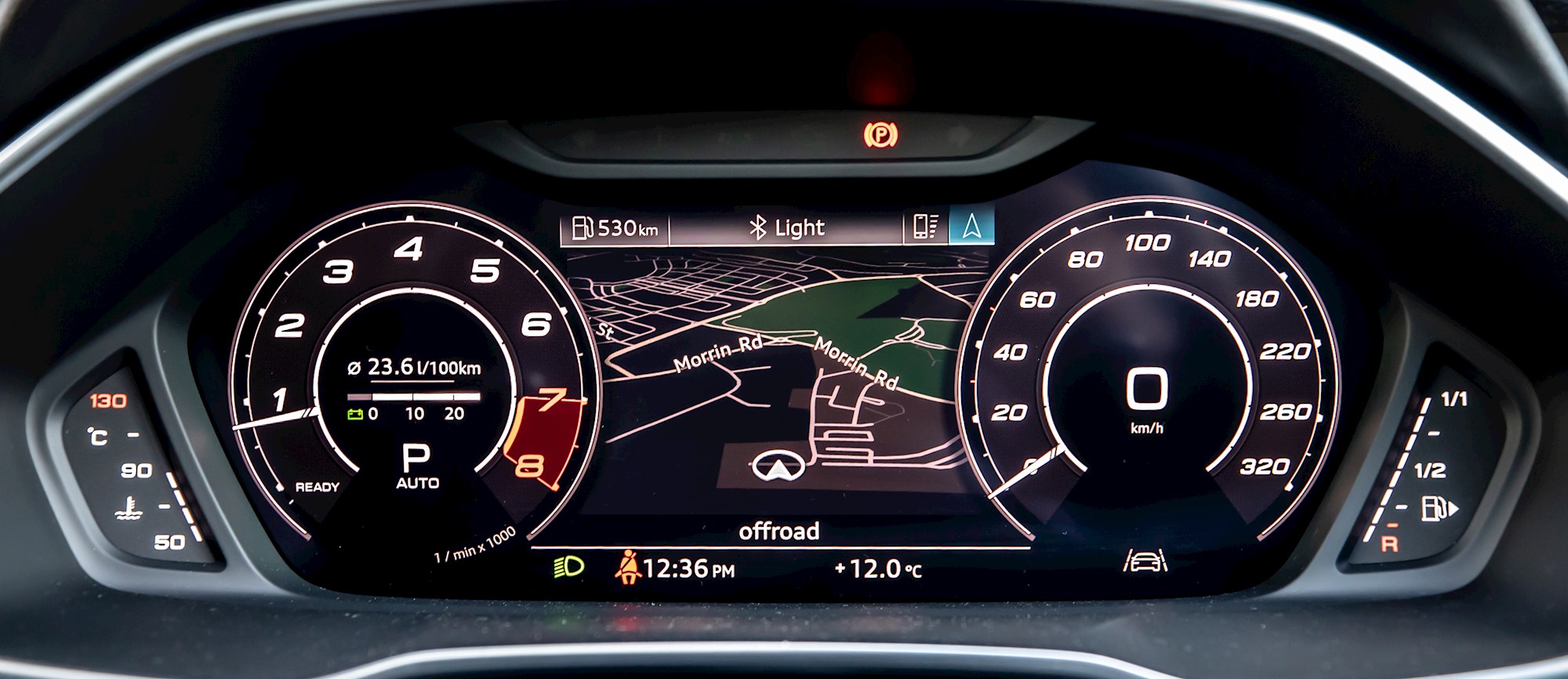
Indeed, it sets a tone for the rest of the shared RSQ3 cabin in that there’s very little to complain about. The standard RS buckets could perhaps be a touch more comfy, the master MMI touch screen is a finger-print magnet, and the lit-up quattro badge on the passenger side is a wee bit corny.
Otherwise, this is probably the best cabin in its class south of a Porsche Macan. Superbly stuck together, lined and punctuated with a rich collection of premium materials, and somewhat disarming to anyone questioning whether either SUV can claim to be worth its six-figure asking price.
That might be the most damning thing about the RSQ3 twins. Say what you want about the merits of buying a hot hatch over a performance SUV, it can’t deny that this new pairing is much more versatile and practical (and current) than their Audi RS3 hot hatch cousin — for just five grand more on the table.
I know which one I’d have. Heck, I might even get it in green.
To view all Audi Q3 models currently listed on DRIVEN, click here
Audi RSQ3 / RSQ3 Sportback
Prices: $111,900 / $114,900
Engine: 2.5-litre 5-cylinder turbo, 294kW/480Nm
















